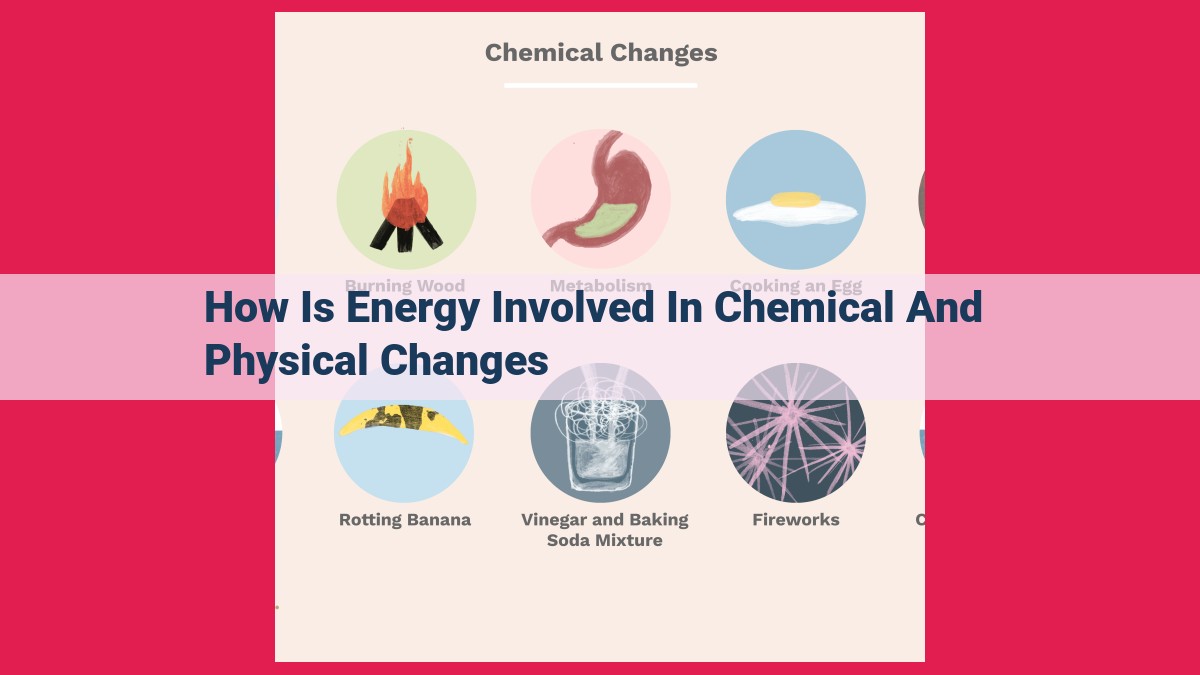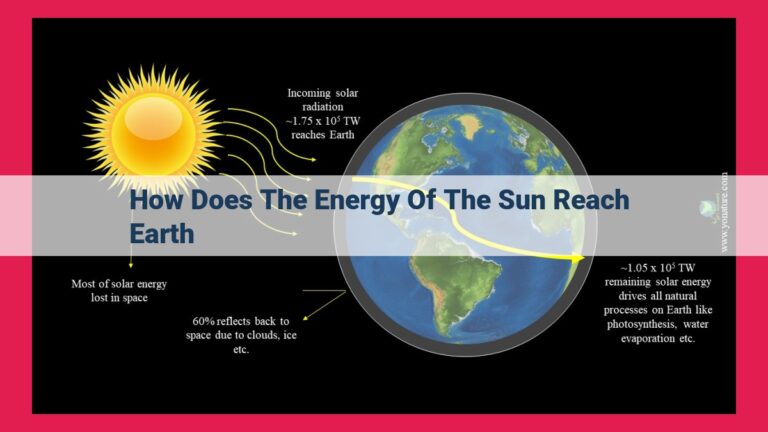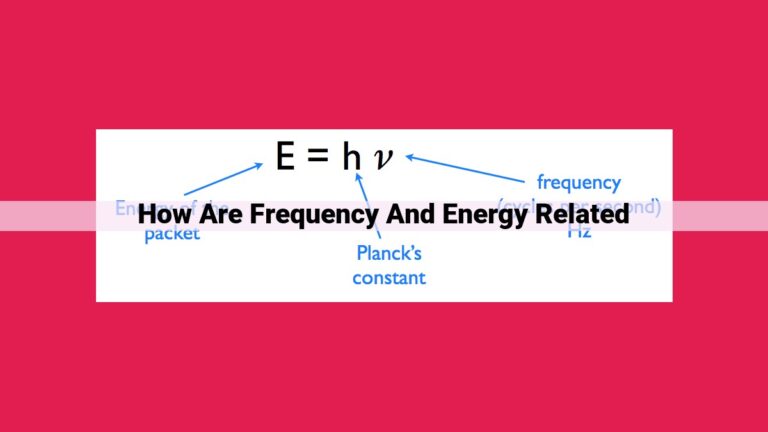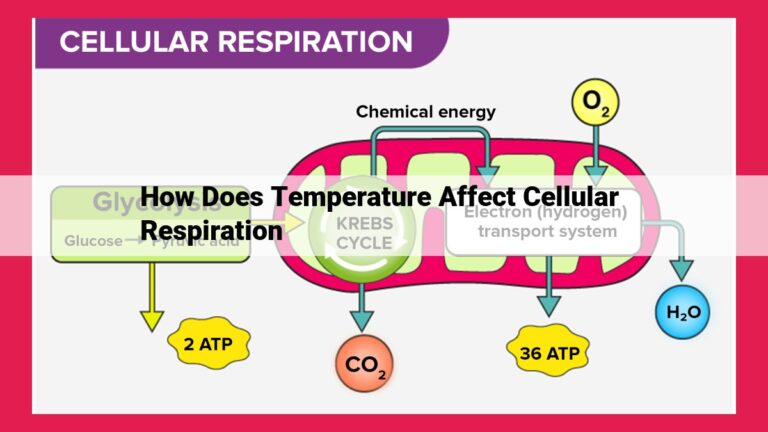Energy: The Driving Force Behind Chemical And Physical Changes

Energy drives chemical and physical changes, shaping the world around us. In chemical changes, energy facilitates the formation of new substances, with endothermic reactions absorbing energy and exothermic reactions releasing it. Physical changes involve the reshaping of matter, and energy is exchanged as melting, freezing, and vaporization occur. Activation energy plays a crucial role in initiating chemical changes, and catalysts can accelerate reactions by lowering this barrier. Heat flow affects temperature, enthalpy, and entropy, while enthalpy and entropy provide insights into energy changes and reaction spontaneity. Overall, energy’s involvement in chemical and physical processes is essential for understanding the dynamic world we inhabit.
The Alchemy of Energy: Its Role in Chemical and Physical Changes
Throughout the vast tapestry of nature, energy plays a pivotal role in the transformations that shape the world around us. In the realm of chemistry and physics, this energy acts as a catalyst, driving both chemical changes, which result in the creation of new substances, and physical changes, where matter undergoes alterations in form and state.
Chemical Changes: The Birth and Rebirth of Matter
Chemical changes, like alchemists of old, transmute one substance into another. These transformations are fueled by energy, which acts as both a catalyst and a choreographer. In endothermic reactions, energy is absorbed from the surroundings, driving the reaction forward and creating new bonds that hold the transformed substance together. In contrast, exothermic reactions release energy into the environment, releasing the stored energy in the original bonds and forming new substances with weaker bonds.
Physical Changes: Energy Reshaping Matter
In the physical realm, energy takes on a different guise, shaping matter without altering its chemical composition. Energy can induce melting, where a solid surrenders to the dance of heat and transforms into a liquid. It can catalyze freezing, where a liquid slows down and freezes into a crystalline embrace. And it can bring forth vaporization, where a liquid gains the freedom to soar as a gas, carried aloft by the wings of energy.
Chemical Changes: The Birth of New Substances
Chemical change, a captivating dance of atoms and molecules, marks the creation of new substances with distinct properties. Unlike physical changes, which merely alter the form or appearance of matter, chemical changes forge unbreakable bonds, transforming one substance into another.
Picture a reaction between hydrogen and oxygen. As these elements collide, their atoms rearrange, forming water, a compound with strikingly different characteristics from its gaseous constituents. This chemical change has given birth to a new substance, a liquid that sustains life on Earth.
The key to chemical change lies in the reconfiguration of atoms. When atoms rearrange their bonds, they form new molecules with unique properties. Energy, the driving force behind this rearrangement, can ignite or hinder chemical reactions, making this process a delicate balance of energy intake and release.
As substances undergo chemical change, they navigate two distinct paths: endothermic and exothermic reactions. Endothermic reactions, energy absorbers, require an external supply of energy to push the reaction forward. Like an eager plant reaching towards the sun, endothermic reactions crave energy to fuel their transformation.
In contrast, exothermic reactions release energy as they proceed. Think of a runaway train, barreling forward as it releases excess energy. These reactions emit heat or light, providing a tangible showcase of the energy released during chemical change.
Energy’s role in chemical change is a story of transformation, where new substances emerge from the reconfiguration of atoms. Whether absorbing or releasing energy, chemical changes drive the intricate dance of matter, creating the diverse world around us.
Endothermic and Exothermic Changes: The Energy Dance
Imagine a lively dance floor where molecules gracefully twirl and transform. This dance is dictated by energy, the lifeblood of chemical changes. Some reactions, like eager party-goers, absorb energy to fuel their transformation, while others release energy, lighting up the dance floor with their exuberance. These two dance styles are known as endothermic and exothermic changes, respectively.
In endothermic reactions, the molecules demand more energy to jump-start their transformation. Picture a shy dancer hesitantly stepping onto the floor, needing a push to get going. These reactions effectively absorb energy from the surroundings, like a sponge soaking up water. This energy boost elevates the enthalpy of the system, a measure of its energy content.
Exothermic reactions, on the other hand, are the energetic crowd-pleasers. They release energy as they transform, like fireworks bursting with color. Imagine a confident dancer taking center stage, showering the crowd with their infectious energy. These reactions decrease the enthalpy of the system, giving off energy to the surroundings like a glowing ember.
The absorption and release of energy in endothermic and exothermic changes are governed by two fundamental principles: enthalpy (ΔH) and entropy (ΔS). ΔH tells us how much energy is absorbed or released, while ΔS measures the randomness or disorder of the system.
In endothermic reactions, the increase in entropy often offsets the energy absorbed, making them appear less chaotic. Exothermic reactions, on the other hand, tend to decrease entropy, as the released energy can be harnessed to organize the system.
Understanding the dance of endothermic and exothermic changes is crucial for predicting the spontaneity of chemical reactions. They determine whether a reaction will proceed “downhill” with the release of energy, or “uphill” requiring energy input. These concepts lie at the heart of many scientific disciplines, from chemistry and biology to engineering and materials science.
Define physical change and emphasize that it does not involve the formation of new substances.
Physical Changes: Energy’s Dance with Matter
In the realm of chemistry and physics, energy plays a pivotal role, shaping and reshaping matter through both chemical and physical changes. While chemical changes involve the creation of new substances, physical changes are all about reshaping and transforming matter without altering its fundamental makeup.
Imagine a block of ice melting under the warm glow of the sun. The ice doesn’t magically transform into something else; it remains water, albeit in a different physical state. Physical changes allow matter to transition between states, from solid to liquid or gas, and vice versa. The key here is that the chemical identity of the substance remains unchanged throughout these transformations.
Energy is the driving force behind these physical changes. When you melt ice, you’re essentially supplying it with enough energy to break the bonds between the water molecules, allowing them to move more freely as a liquid. Similarly, when you boil water, you’re adding even more energy, this time enough to overcome the attractive forces and turn the liquid into a gas.
In essence, physical changes are like a game of musical chairs for molecules. The molecules themselves stay the same, but their arrangement and interactions are constantly shifting, all thanks to the dance of energy.
Explain that energy can be involved in physical changes, such as melting, freezing, and vaporization.
Physical Changes: Energy’s Role in Reshaping Matter
In the realm of science, change is an ever-present force, manifesting itself in a multitude of ways. Physical changes, unlike their chemical counterparts, do not involve the formation of new substances. Instead, they represent the transformation of matter from one physical state to another. These transformations, subtle yet profound, are orchestrated by the energy that courses through the molecular world.
Just as a blacksmith wields his hammer to mold iron, energy serves as the architect of physical changes. Its transformative touch is evident when ice melts into liquid water, when wax solidifies from its molten state, and when water vapor condenses into raindrops. In each of these processes, energy acts as the catalyst, facilitating the rearrangement of molecules into new physical forms.
Melting, the transition from solid to liquid, is a prime example of energy’s transformative power. As heat is applied to a solid, its molecules absorb energy and begin to vibrate more vigorously. This increased vibrational motion disrupts the rigid molecular structure of the solid, allowing the molecules to break free from their fixed positions and flow past one another, giving rise to the liquid state.
Freezing, on the other hand, represents the reverse transformation, from liquid to solid. As a liquid cools, its molecules lose energy, causing their vibrational motion to slow down. This decrease in molecular energy allows the molecules to come closer together, forming the ordered, crystalline structure characteristic of solids.
Vaporization, the process by which a liquid turns into a gas, is a more energetic transformation. In this case, heat energy is used to overcome the intermolecular forces that hold the liquid molecules together. As the molecules absorb this energy, they gain enough kinetic energy to break free from the liquid’s embrace and spread out as a gas.
These examples illustrate the profound role of energy in shaping the physical world around us. Water, in its various forms, epitomizes this energy-driven transformation, serving as a testament to the intricate interplay between matter and energy that governs our universe.
Endothermic and Exothermic Changes: The Dramatic Dance of Energy
Endothermic Reactions: Energy Unleashed from Within
Imagine a sluggish reaction, one that reluctantly unfolds before your eyes. This is an endothermic reaction, a greedy consumer of energy. As it proceeds, the bonds holding the reactants together weaken, and the products eagerly soak up energy from their surroundings. The reaction craves this energy to overcome the stubbornness of the reactants and push them towards change.
Exothermic Reactions: Energy Releasing Extravaganza
In contrast, exothermic reactions are like energetic volcanoes, spewing energy into the world. Picture a firecracker exploding, releasing its pent-up energy in a spectacular display. These reactions are the opposite of endothermic reactions. As the products form, they eagerly release their excess energy, like elated children sharing their joy with the world.
The Energy Flow: Unveiling the Hidden Dynamics
The hidden secrets of endothermic and exothermic reactions lie in the dance of energy:
- In endothermic reactions, energy flows into the system from the surroundings, raising the temperature of the system.
- In exothermic reactions, energy flows out of the system into the surroundings, lowering the temperature of the system.
Delving into the Scientific Jargon: Enthalpy and Entropy
Scientists have coined two crucial terms to quantify this energy exchange:
-
Enthalpy (ΔH) measures the heat absorbed or released by the system during a chemical or physical change. In endothermic reactions, ΔH is positive (energy is absorbed), while in exothermic reactions, ΔH is negative (energy is released).
-
Entropy (ΔS) measures the disorder or randomness of the system. As a reaction proceeds, disorder typically increases (ΔS is positive).
The Alchemy of Heat
Heat, the invisible force that flows between systems, plays a pivotal role in endothermic and exothermic reactions.
- Heat Flow: Heat flows from higher-temperature to lower-temperature objects.
- Temperature: Temperature is a measure of the average energy of molecules in a system. Higher temperatures indicate more energy.
- Enthalpy and Heat: Enthalpy changes (ΔH) are often directly related to heat flow. Positive ΔH means heat is absorbed, while negative ΔH means heat is released.
The Interplay of Energy, Enthalpy, and Entropy in Endothermic and Exothermic Reactions
Imagine yourself in a kitchen, observing a pot of water boiling on the stove. The bubbling water is a testament to the dance between energy, enthalpy, and entropy. As heat is added to the water, its molecules absorb this energy and start to move faster, causing the liquid to bubble and turn to vapor. This process is called an endothermic reaction, meaning that it requires energy to occur.
In contrast, consider a cold pack that you activate by squeezing it. The sudden cooling sensation is due to an exothermic reaction, where energy is released as the pack’s contents undergo a chemical change. This energy loss causes the surrounding environment to cool down.
The Role of Enthalpy (ΔH)
Enthalpy (ΔH) is a measure of the energy content of a system. In an endothermic reaction, ΔH is positive because the system absorbs energy from its surroundings. In an exothermic reaction, ΔH is negative because the system releases energy to its surroundings.
The Role of Entropy (ΔS)
Entropy (ΔS) is a measure of the disorder or randomness in a system. In an endothermic reaction, ΔS is typically positive because the increased molecular motion introduces more disorder into the system. In an exothermic reaction, ΔS can be positive or negative, depending on the nature of the reaction.
The Spontaneity of Reactions
The spontaneity of a reaction can be predicted by considering both ΔH and ΔS. A reaction is spontaneous if it occurs without the need for external energy (i.e., it is exothermic) or if it increases the disorder of the system (i.e., ΔS is positive).
In an endothermic reaction (ΔH positive), spontaneity requires a positive ΔS. In an exothermic reaction (ΔH negative), spontaneity can occur even with a negative ΔS as long as the released energy is large enough to compensate for the decrease in disorder.
Understanding the relationship between energy, enthalpy, and entropy is crucial for understanding chemical and physical processes in our world, from boiling water to chemical reactions in our bodies.
Activation Energy: The Spark that Ignites Chemical Reactions
Embark on a Chemical Adventure
Imagine you’re a master chef preparing a culinary masterpiece. To whip up a delectable dish, you need to heat your ingredients. But what is heat, really? It’s a form of energy that can help molecules overcome a barrier, known as activation energy. Just as heat activates the cooking process, activation energy is the key that unlocks chemical reactions.
Unlocking the Gates of Transformation
In chemical reactions, molecules need to overcome an energy barrier, like the protective gate of a medieval castle. This barrier prevents them from transforming into new substances. Activation energy is the minimum amount of energy that molecules need to possess to overcome this barrier and initiate the reaction.
Think of it like a Race
Runners need a certain amount of energy to break the starting line and begin the race. Similarly, molecules require activation energy to break free from their stable state and embark on a transformative journey. Once they clear this energy hurdle, the reaction can proceed spontaneously.
Catalysts: The Magical Accelerators
Chemical reactions can often be slow and sluggish, like a snail crossing a road. But there’s a way to speed things up: catalysts. These magical substances act as facilitators, reducing the activation energy required for a reaction. Just as a traffic light turns green to allow cars to move, catalysts lower the energy barrier, allowing molecules to zip through the gate faster.
Energy’s Role in the Grand Symphony
Activation energy is a pivotal concept in chemistry, shaping the pace and spontaneity of reactions. It’s like the energetic spark that ignites the flames of chemical transformation, allowing us to witness the wonders of molecular alchemy.
Catalysts: The Magic Wand of Chemical Reactions
In the realm of chemical reactions, there exist guardians known as catalysts. These enigmatic substances possess the extraordinary ability to lower the activation energy required for reactions to get started. Picture this: a chemical reaction is like a race, and the activation energy is the hurdle that must be overcome to trigger the race. Catalysts act as resourceful shortcuts, reducing the height of this hurdle, making it easier for reactions to take place.
Imagine a lazy runner who struggles to make it over a towering hurdle. A coach appears, urging the runner to take a smaller hurdle. The runner effortlessly leaps over the smaller obstacle and begins the race with renewed vigor. Catalysts play a similar role in chemical reactions. They provide an alternative pathway with a lower activation energy barrier, enabling reactions to proceed at a much faster pace.
The acceleration of reactions by catalysts has profound implications in various fields. In industries, catalysts enhance the efficiency of chemical processes, reducing energy consumption and production costs. In our bodies, enzymes, which are natural catalysts, govern essential biochemical reactions, ensuring the smooth functioning of life processes.
Without catalysts, many chemical reactions would either be extremely slow or not occur at all. These magical substances are the unsung heroes, facilitating countless transformations and driving the vibrant world of chemistry forward.
Heat: The Energy Exchange Between Matter
In the realm of chemical and physical transformations, heat plays a pivotal role, acting as the mediator of energy exchange between substances. Heat, defined as the transfer of thermal energy between systems at different temperatures, manifests itself in various ways, influencing the behavior and properties of matter.
In chemical changes, heat can either be absorbed (endothermic) or released (exothermic) during the reaction. Endothermic reactions require an input of heat from the surroundings to proceed, as the bonds formed in the new substance are weaker than those broken in the reactants. Conversely, exothermic reactions release heat as the newly formed bonds are stronger than the bonds broken.
In physical changes, heat is involved in processes such as melting, freezing, and vaporization. When a solid melts, heat is absorbed as the molecules gain energy and break free from their rigid lattice structure. Similarly, heat is released when a liquid freezes as the molecules lose energy and form a more ordered crystal structure. Vaporization, the transformation from liquid to gas, also involves heat absorption as the molecules overcome intermolecular forces and gain enough energy to separate.
The flow of heat can significantly affect the temperature of a substance. Heat transfer raises the temperature of a substance, while its removal lowers it. Additionally, heat flow can alter the substance’s enthalpy (ΔH), a measure of the heat content, and its entropy (ΔS), a measure of disorder.
In endothermic reactions, heat absorption increases the enthalpy of the system and decreases its entropy. In exothermic reactions, heat release decreases the enthalpy and increases the entropy. Understanding the relationship between heat, enthalpy, and entropy is crucial for predicting the spontaneity and direction of reactions.
Discuss how heat flow can affect temperature, enthalpy, and entropy.
Heat and Its Influence on Temperature, Enthalpy, and Entropy
When heat flows between systems, it carries with it the potential to alter their physical and chemical properties. Understanding how heat flow impacts these properties is essential for comprehending the dynamics of chemical and physical changes.
Temperature and Heat Flow
Temperature is a measure of the average kinetic energy of particles within a system. As heat flows into a system, the particles gain energy, resulting in an increase in temperature. Conversely, heat flowing out of a system causes the particles to lose energy, leading to a decrease in temperature.
Enthalpy and Heat Flow
Enthalpy, denoted by ΔH, represents the total thermal energy of a system. When heat flows into a system, the enthalpy increases. This is because the system gains energy in the form of heat. Conversely, when heat flows out of a system, the enthalpy decreases as the system loses energy.
Entropy and Heat Flow
Entropy, denoted by ΔS, measures the degree of disorder or randomness within a system. As heat flows into a system, the entropy generally increases. This is because the increased energy allows the particles to move more freely, leading to greater disorder. In contrast, when heat flows out of a system, the entropy decreases as the particles become more ordered.
Interplay of Heat Flow, Temperature, Enthalpy, and Entropy
The interplay between heat flow, temperature, enthalpy, and entropy is complex and interrelated. Heat flow can affect all three properties, and changes in one property can lead to changes in the others. By understanding these relationships, we can better predict and control chemical and physical processes.
Energy’s Yin and Yang: Enthalpy and Entropy
In the realm of chemical and physical transformations, energy plays a pivotal role. Two key concepts that describe energy’s behavior are enthalpy (ΔH) and entropy (ΔS). Enthalpy represents the total thermal energy of a system, while entropy measures its degree of disorder or randomness.
Enthalpy: A Measure of Energy Change
Think of enthalpy as the heat flowing in or out of a system. When a chemical reaction releases heat, it’s considered exothermic, and ΔH is negative. Conversely, if a reaction absorbs heat, it’s endothermic, and ΔH is positive.
Entropy: Embracing Disorder
Entropy, on the other hand, reflects the disorder or randomness within a system. As a system becomes more disorganized, its entropy increases. This is often the case in spontaneous reactions, where the products are more disordered than the reactants.
The Interplay of Enthalpy and Entropy
Enthalpy and entropy are closely intertwined. In exothermic reactions, the release of heat can increase entropy, driving the reaction forward. Conversely, in endothermic reactions, the absorption of heat can decrease entropy, making the reaction less likely to occur.
Predicting Reaction Spontaneity
Together, enthalpy and entropy can help predict the spontaneity of a reaction. If the sum of ΔH and TΔS is negative, the reaction is spontaneous. If it’s positive, the reaction is non-spontaneous.
Enthalpy and entropy are powerful concepts that illuminate the dance of energy in chemical and physical changes. By understanding the interplay between these two forces, we can unravel the secrets of matter’s transformations and predict the spontaneity of reactions.
Enthalpy and Entropy: Predicting the Spontaneity of Reactions
In the realm of chemical transformations, enthalpy (ΔH) and entropy (ΔS) reign supreme as guiding forces that determine whether a reaction will proceed spontaneously. Spontaneity, in this context, refers to a reaction’s natural inclination to occur without the need for external energy input.
Enthalpy quantifies the heat change associated with a reaction. Exothermic reactions (heat-releasing) have negative ΔH values, while endothermic reactions (heat-absorbing) boast positive ΔH values.
Entropy, on the other hand, measures the disorder or randomness of a system. Reactions that lead to an increase in disorder (higher entropy) have positive ΔS values. Conversely, reactions that result in decreased disorder (lower entropy) exhibit negative ΔS values.
The spontaneity of a reaction is determined by the interplay between ΔH and ΔS according to the Gibbs free energy equation: ΔG = ΔH – TΔS.
- ΔG < 0: Spontaneous reaction (reaction proceeds without external energy input)
- ΔG > 0: Non-spontaneous reaction (external energy required to drive the reaction)
- ΔG = 0: Reaction is at equilibrium
By analyzing the ΔH and ΔS values of a reaction, we can predict its spontaneity. Exothermic reactions with positive ΔS values (ΔG < 0) are highly spontaneous. Conversely, endothermic reactions with negative ΔS values (ΔG > 0) are non-spontaneous.
For example, the combustion of methane (CH4) is highly exothermic (ΔH = -890 kJ/mol) and has a positive ΔS (ΔS = 186 J/mol·K). According to the Gibbs free energy equation, ΔG = -890 kJ/mol – 298 K * 0.186 kJ/mol·K = -864 kJ/mol, indicating a spontaneous reaction.
Summarize the key concepts discussed in each section.
The Role of Energy in Chemical and Physical Changes: An Exploration of Energy’s Influence
Embark on a fascinating journey into the realm of chemistry and physics, where we unravel the profound role of energy in transforming the world around us. From the whisper of a gentle breeze to the thunderous roar of an explosion, energy is the invisible force that orchestrates every change in our universe.
Chemical Changes: Energy as a Catalyst for Transformations
Chemical changes, like the metamorphosis of a caterpillar into a butterfly, involve the formation of new substances. They are powered by the absorption or release of energy. Endothermic reactions crave energy, absorbing it from their surroundings like thirsty sponges. Conversely, exothermic reactions are bountiful sources of energy, releasing it into the environment like shining stars.
Physical Changes: Energy’s Role in Reshaping Matter
Unlike chemical changes, physical changes don’t create new substances. Instead, they reshape existing ones. Imagine kneading dough into different shapes or melting ice into liquid. Energy, like a skilled sculptor, molds the physical form of matter without changing its chemical composition.
Endothermic and Exothermic Changes: The Flow of Energy
Endothermic changes absorb energy, making their surroundings colder. Think of a cold pack that absorbs body heat to soothe sore muscles. Exothermic changes release energy, warming their environment. Picture a cozy fire, its flames radiating heat and comfort. Enthalpy (ΔH) measures the energy exchanged, while entropy (ΔS) quantifies the randomness or disorder within the system.
Activation Energy: Unlocking the Gateway to Chemical Change
For a chemical reaction to occur, it must overcome a hurdle called activation energy. This energy barrier is like a locked gate, preventing reactions from happening spontaneously. Catalysts, like keys in a lock, lower the activation energy, allowing reactions to proceed more easily and quickly.
Heat: The Energy Exchange Between Matter
Heat, the transfer of thermal energy, plays a crucial role in chemical and physical changes. It influences temperature, enthalpy, and entropy. Heat can melt solids, vaporize liquids, and even trigger exothermic reactions.
Enthalpy and Entropy: Exploring Energy’s Yin and Yang
Enthalpy (ΔH) measures the change in heat content, indicating the energy absorbed or released. Entropy (ΔS) reflects the randomness or disorder of a system. Together, they govern the spontaneity of reactions. Exothermic reactions with positive entropy are likely to occur spontaneously, while endothermic reactions with negative entropy require coaxing.
From the smallest atomic vibrations to the grandest cosmic explosions, energy is the driving force that orchestrates every transformation in our universe. Understanding the role of energy in chemical and physical changes helps us unravel the secrets of the world around us and harness its power for countless applications.
Reiterate the importance of understanding energy’s involvement in chemical and physical changes.
Reiterating the Importance of Understanding Energy’s Role in Chemical and Physical Changes
Energy plays a pivotal role in all aspects of our lives, including the transformations that occur around us on a molecular and macroscopic level. In the context of chemistry and physics, comprehending energy’s involvement in chemical and physical changes is paramount.
Chemical Changes: A Transformation Symphony
Chemical changes are captivating transformations that witness the birth of new substances. These alterations can either release (exothermic) or absorb (endothermic) energy. Understanding the interplay between energy and chemical changes empowers us to predict and manipulate their outcomes.
Physical Changes: Reshaping Without Transformation
Physical changes, on the other hand, reshape matter without altering its chemical composition. Energy plays a key role in these processes, enabling the melting, freezing, and vaporization of substances. By understanding the energetic underpinnings of physical changes, we gain insights into the behavior of materials.
Endothermic and Exothermic: The Dance of Energy
Endothermic and exothermic changes illuminate the intricate relationship between energy and matter. Endothermic processes demand an input of energy to occur, while exothermic processes release energy as they unfold. Exploring the enthalpy and entropy changes associated with these reactions provides invaluable insights into the flow of energy.
Activation Energy: Unlocking the Potential
Activation energy is the threshold energy required to initiate a chemical reaction. By understanding this concept, scientists can design catalysts that lower the activation energy barrier, speeding up reactions and facilitating the efficient production of desired substances.
Heat: The Energy Exchange
Heat, another form of energy, is instrumental in chemical and physical changes. Heat flow alters temperature, enthalpy, and entropy, shaping the behavior of systems. Comprehending heat’s role enables us to control and manipulate processes in various fields.
Enthalpy and Entropy: Energy’s Yin and Yang
Enthalpy and entropy are two fundamental thermodynamic properties that provide a window into energy changes. Enthalpy quantifies the energy content, while entropy measures the disorder of a system. Together, they dictate the spontaneity and direction of reactions.
In conclusion, understanding energy’s involvement in chemical and physical changes is indispensable. It unlocks a deeper comprehension of the world around us, empowers us to harness and control energy, and lays the foundation for countless scientific and technological advancements.





